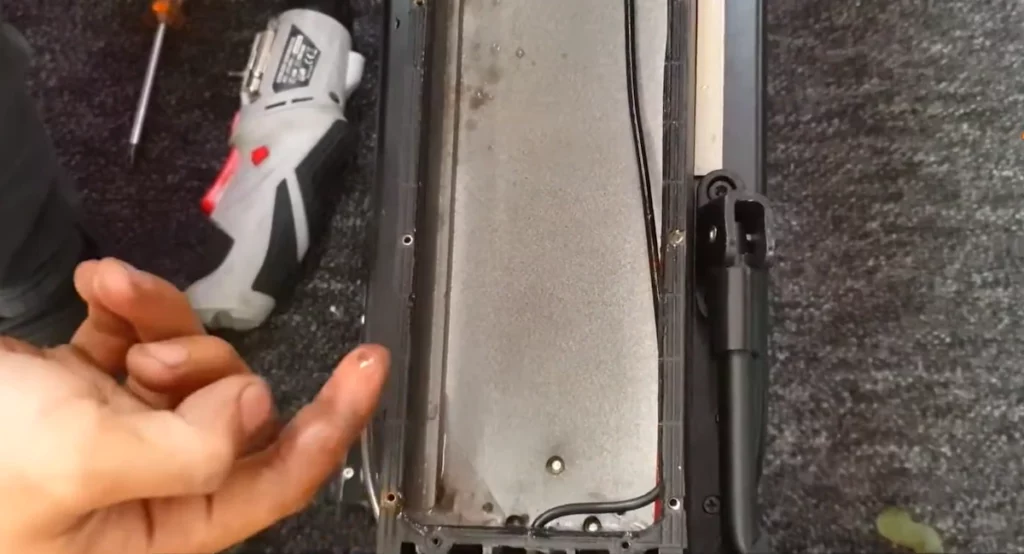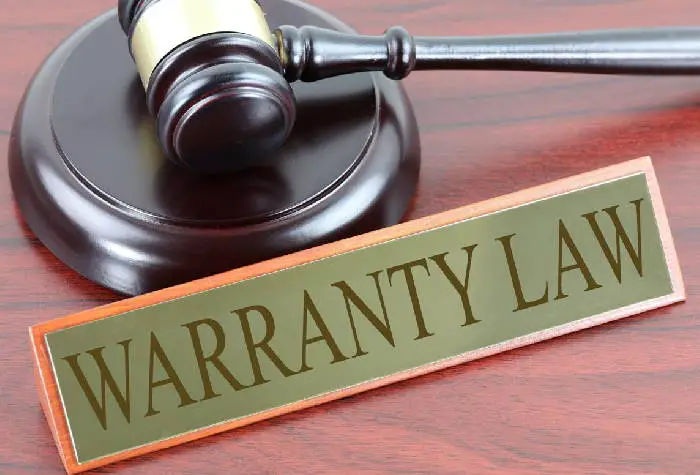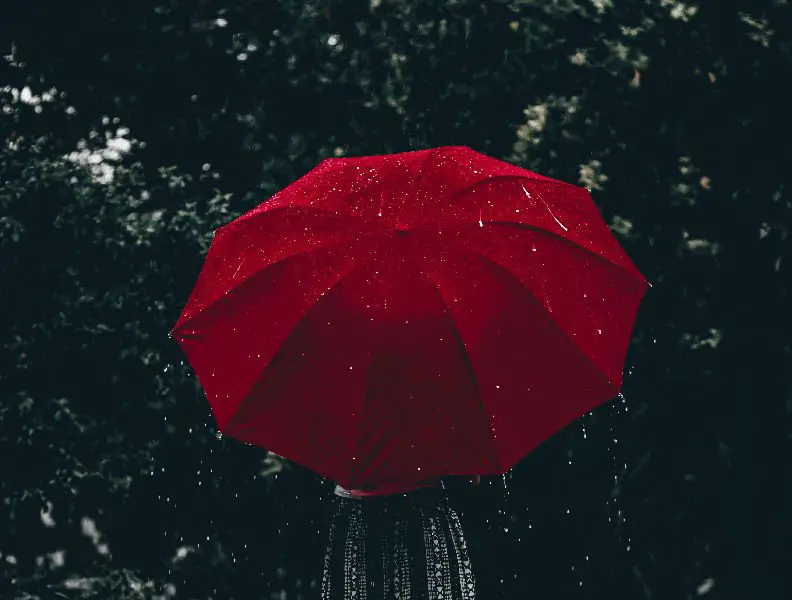Electric scooter warranties are critical for owners to understand fully. Before you buy an electric scooter, you should be mindful of common traps and pitfalls. The specifics will differ across scooter models and brands, and this article will guide you through all of the gotchas, fine print, and legal talk.

Electric Scooter Warranty
Electric scooter warranties last 12 months on average, but they can last anywhere between 3 and 24 months. The warranty on the battery and other components can be shorter sometimes. The return period is between 3 and 30 days usually.

Electric scooter warranty quick reference
Electric scooter warranties vary by component duration.
Critical electronic parts, such as the battery, motor and controller, often offer 6 months to 2 years of coverage.
Wear-and-tear parts have shorter warranties, around 14 to 30 days.
Major electric scooter brands, including Xiaomi, Segway Ninebot, Kugoo, GoTrax, Swagtron, Razor, and Glion Dolly, as well as premium brands like EMove, Dualtron, Apollo, Kaabo, Zero, Turbowheel, Speedway, Inokim, and Mercane, provide warranties.
It’s essential to note that the warranty is usually offered by the retailer rather than the manufacturer, depending on where you purchase the scooter.
For instance, if you buy a Kaabo scooter from Voromotors, Voromotors provides the warranty, whereas online store purchases like Amazon typically fulfill the warranty through the manufacturer.
Most scooters have return windows from 3 to 30 days.
You can request a replacement for damaged or unsatisfactory scooters. For delivery damage or order errors, specific parts replacements are often free.
However, substantial modifications, like structural or internal changes, are not covered.
It’s probably one of the most general electric scooter disadvantages, as many models can easily install custom firmware, which will likely invalidate the warranty.
Custom firmware can boost performance, but it comes with warranty risks, a common drawback.
For specifics about the scooter you intend to purchase, including the region and retailer, consult this guide and your chosen scooter and seller’s warranty policy.
What does an electric scooter warranty cover?

Typically, warranties cover malfunction of the following components:
- motor
- battery
- controller
- LCD screen, dashboard, and controls
- throttle
- brakes
- suspension (most of the time)
The only type of damage covered by the warranty is manufacturing defects. If the fault in the component is caused by improper use, the warranty will probably not cover it.
Let’s look at two simple examples to clarify this.
For instance, if your scooter is three months old and well-maintained, but one morning it won’t power on, your valid warranty should cover a new component or replacement scooter.
However, you’ve attempted to modify the motor, overvolt the battery, and engaged in multiple firmware hacks, resulting in error codes and firmware resets.
Additionally, you’ve frequently ridden in the rain, intentionally taken on substantial potholes, and even conducted durability tests with a hammer on the deck and stem to assess the scooter’s reliability.
In this case, your warranty will be void.
Most cases fall in between these extremes and warranty providers don’t always pinpoint exact damage.
While this may allow room for deception, they often identify the true cause, resulting in non-warranty coverage. Some less reputable brands might resist warranty claims even when there’s no consumer fault.
What is not covered by an electric scooter warranty?
In the majority of cases, the following is not covered by the warranty:
- flat tires
- wheels
- missing screws, nuts, or bolts
- physical damage to the deck, handlebar, or chassis
- wear-and-tear parts (fenders, rubber or plastic covers)
- surface or paint damage
- seat, basket, and other accessories
How to claim your warranty?
To activate your warranty, start by choosing a reputable retailer.
Follow the assembly instructions in the manual precisely.
Keep all packaging, contents, warranty cards, and the receipt until the return period ends. If no warranty card is included, contact your retailer, and keep your receipt.
Typically, claiming your warranty will involve the following steps:
- you will find the designated channel for customer support or warranty claims that the brand has specified (email, contact form, chat, phone, social media)
- you will inform the brand of the defect
- you will probably need to describe the defect in some detail and include photos or videos showcasing the problem
- you will then wait to receive guidance from the brand, and possibly replacement parts needed to fix the problem
- you can return your scooter for repair or replacement, and shipping costs may be covered by the customer, especially for returns of functional scooters.
What to do if the brand doesn’t accept your warranty claim?
As a scooter blogger, I often mediate between brands and consumers.
Warranty claims can be contentious, but most brands aim to serve customers well. If a brand resists addressing a valid warranty issue, stay calm and persistent.
Explain your circumstances clearly, this usually resolves the problem.
Less reputable brands may try to deter consumers. Stand your ground politely, and if needed, refer to consumer protection laws for support.
When is an electric scooter warranty void?
Most electric scooter brands clearly state what constitutes improper use of their scooters, and if that can be determined by them as the cause for the defect, the warranty may be voided.
Improper use is described in the user manual, as it can be specific to the scooter model or version. The most common instances of improper use are:
- water damage
- modifications
- overload
- incorrect riding
Water damage

Water damage is a frequent cause of scooter electronic malfunctions.
The battery is particularly susceptible, while the motor is less sensitive to water.
Rust is another significant concern, with many scooters at risk of corrosion if not dried properly after riding, especially lower-quality models.
Water damage is not covered by the warranty, even in waterproof scooters with high IP ratings.
While typically advocating for consumers, I side with manufacturers on this issue and advise minimizing rain riding whenever possible(personally, I do ride my Xiaomi M365 Pro through the rain when I have no choice, but not otherwise).
Electric scooters are electronic devices, and we can’t expect flawless performance in the rain, considering their affordable price.
Modifications

Modifying your scooter in a significant way will probably void your warranty. Modifications that void the warranty include:
- rewinding the motor
- overvolting/upgrading the battery
- installing different wheels
- tinkering with the sprockets in chain-drive scooters
- installing accessories that the scooter doesn’t natively support, like drilling holes in the deck to add a custom seat frame
- in most cases, opening the scooter’s deck, screen, or other internals
- in some cases, altering the brakes in a way they are not meant to be adjusted
- in most cases, installing custom firmware or hacks
Pay close attention to the brakes, as some scooter models void the warranty entirely if brake modifications are attempted.
While such models are limited, consult your scooter’s manual to ensure brake adjustments won’t impact the warranty.
Modifications that will probably not void your warranty may include:
- decorative changes, like adding stickers
- installing additional accessories on the scooter that don’t interfere with the scooter’s integrity, like adding a phone mount or adding additional scooter lights
- in most cases, adding sealant or Loctite to the screws
- adjusting your scooter’s brakes in the way they are meant to be adjusted (for scooters whose warranties allow that)
- adjusting the suspension
Overload
Electric scooter weight limits serve as guidelines on how the scooter is intended to work and should be used.
Exceeding the weight limit won’t cause an immediate breakdown but can lead to eventual wear and damage.
Exceeding the weight limit is less common as a warranty-voiding reason since manufacturers struggle to prove it caused defects.
However, it falls under improper use, and the weight limit should be respected.
Riding with two people is a common cause of such defects. If the scooter’s weight limit doesn’t support you, consider looking for scooters for heavy adults.
Incorrect riding

Most user manuals clearly state how to ride the electric scooter. Even if they don’t, the rules are often pretty straightforward and common sense:
- slow down when going over uneven terrain
- don’t accelerate when riding downhill
- always ride with both feet on the deck
- always ride with both hands on the handlebar
- turn carefully
- always ride alone
- do not ride off of curbs or into them
- don’t do stunts with your scooter
Scooterists often overlook these guidelines and permanently damage their scooters.
While I don’t want to discourage adventurous riding, it’s essential to know that extreme activities can void your warranty if they result in scooter damage.
Battery and charger warranties
Battery and charger warranties typically range from 6 to 12 months.
Batteries and chargers usually have shorter warranty periods compared to other parts, such as one year for critical components and six months for batteries and chargers.
The reason behind this is the decreasing battery lifespan, something that occurs in all electronic devices today.
While there are some steps you can take to increase the battery lifespan, the batteries wearing out is just a fact of life for scooters.
After 2 to 3 years or 300 to 500 full charge cycles (whichever of those comes first), your battery will be worn out to a point where you will probably need to get a new one.

Manufacturers are well aware of this and simply play it safe by usually giving just 6 months of warranty on the battery.
Still, some brands do provide the same warranty for the battery as for the rest of the scooter, which is always much welcome.
Return periods and return policies
Most reputable brands and stores have return policies for their scooters, typically lasting 14 or 30 days, though some offer shorter periods like 7 or even just 3 days.
If the scooter arrives dead-on-arrival or experiences a major malfunction within the return period, at least one of the following three options should be available, if not all three:
- if it’s a single component that’s faulty, you can get a new component for free (most likely)
- you can get a full refund for your scooter
- you can get a replacement for your scooter
Similarly, if you receive the wrong scooter model or features compared to your order (e.g., ordered 48-Volt, received 36-Volt), returning or requesting a replacement often incurs additional shipping costs.
Brands seldom offer free return shipping, and some may impose a 10% restocking fee, particularly if the return is due to personal preference rather than a defect.
Warranty policies of the most trusted brands
Certain brands and retailers stand out for their transparency and commitment to customer satisfaction, often offering the clearest and most equitable warranty policies in the scooter industry.
Below is a table featuring top brands and the key points of their warranty and return policies.
| Brand/retailer | Warranty period | Return period |
|---|---|---|
| Apollo Warranties, Returns | 12 or 24 months, depending on model | 30 days or 10 km |
| Dualtron (Voromotors) | 12 months (add 1-year Extend product protection and use coupon FreeExtend for 2 years of free warranty) | 7 days |
| EMove (Voromotors) | 12 months (you can extend up to 48 months) | 3 days or 10 miles |
| FluidFreeRide | 6 or 12 months, depending on model | 15 or 30 days |
| Glion Dolly | 12 months or 1000 miles (whichever comes first) | 30 days |
| GoTrax | 90 days | 30 days |
| Hiboy | 12 months or depending on reseller | 30 days |
| Inokim (FFR) | 12 months | 15 days |
| Inokim (PureElectric) | 12 months | 30 days |
| Kaabo (Voromotors) | 12 months (you can extend up to 48 months) | 3 days or 10 miles |
| Kaabo (FFR) | 6 months | 15 days |
| Kugoo (GeekBuying) | 12 months (6 on battery) | 7 or 14 days |
| Mercane Widewheel (FFR) | 6 months | 15 days |
| Ninebot (Segway store) | 12 months (6 on battery), may depend on model | 30 days |
| Ninebot (PureElectric) | 24 months | 30 days |
| Razor (Amazon) | 90 days | 30 days |
| Razor (PureElectric) | 90 days | 30 days |
| Speedway (MinimotorsUSA) | 6 months | 7 days |
| Swagtron | 90 days | 30 days |
| Turbowheel (EWheels) | 12 months | 14 days |
| Voyager | 12 months | 30 days |
| Xiaomi (GeekBuying) | 12 months | 7 or 14 days |
| Xiaomi (BangGood) | 6 months | 7 or 30 days |
| Xiaomi (PureElectric) | 24 months | 30 days |
| Zero (RevRides) | 6 months | 5 or 10 days |
Warranty and consumer protection laws

Retailers offer refurbished scooters with deals similar to new ones.
The warranty conditions for refurbished scooters match those for new ones, especially with reputable brands. Extending the warranty can be pricier, particularly through third-party providers.
Used electric scooters usually have transferable warranties, not tied to one owner.
Opt for slightly older used scooters from previous owners who’ve changed their minds after a few months to ensure functionality and a remaining warranty period.
US
In the US, several governing bodies and organizations may be useful to you if you’re having problems enforcing a valid warranty claim. You can file a complaint with the Federal Trade Commission, or contact the Better Business Bureau.
UK
In the UK, you can file a complaint to the Citizen’s Advice Bureau, or the Trading Standards Institute.
EU
In the European Union, laws that protect customers and may enforce warranties to be respected will differ depending on the country.
Canada
In Canada, consumer interests are protected by the Consumer Protection Act, and there will be additional sets of laws depending on the province.
Australia
In Australia, the Fair Trading Laws and the Competition and Consumer Act of 2010 will protect your interests as a consumer.
Warranty cost and extended warranties
Most reputable scooter brands offer some form of free warranty for their scooters, but for budget models (like many GoTrax and Razor scooters) the warranty is shorter.
The warranty may be relatively short, often just 90 days
To address this, many new owners opt for extended warranties when available. In some cases, third-party services like Extend offer extended warranty options.
Warranties on used and refurbished scooters
Some retailers offer refurbished scooters with attractive deals. Warranty conditions for refurbished scooters generally mirror those for new scooters, particularly from reputable brands.
Extending the warranty may cost more, especially through third-party warranty providers.
For used electric scooters, the warranty is typically transferrable and not tied to one owner.
It’s advisable to seek slightly older used scooters from owners who’ve changed their minds after a few months, ensuring both functionality and a remaining warranty period.
See the used electric scooter marketplace and the guide on how to buy a used electric scooter if you’re looking for a good scooter deal.







